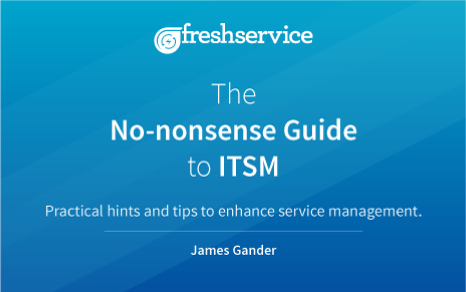Simplify IT Asset Management with Our Guide
All things ITAM — all in one place. Discover IT Asset Management processes, benefits, examples, and software features to set you up for success.
IT Asset Management (ITAM) is the process of acquiring, cataloging, tracking, maintaining, and disposing of an organization’s technology assets. A critical aspect of ITAM is determining how IT supports the business, especially the end users. It entails managing the costs of IT equipment and infrastructure throughout their lifecycle, optimizing costs, and the use of IT assets.
Any hardware, software, or even information that the organization values constitutes an IT asset. For example, this could be a laptop, a desktop, an office mobile phone, a system database, office software, licenses for apps, etc. It is important to consider the ‘lifecycle’ of IT assets because their value depreciates over time. Thus, it is important to have IT asset management to maximize asset lifecycle and align them with the requirements of the business.

A critical aspect of ITAM is determining how IT supports the business. Here are four reasons why ITAM is important:
Assets in an organization are often owned and used by multiple people, with no centralized point of information available to track these assets. This results in inaccuracy and a waste of resources, as people are deployed to manually track these assets. With ITAM, you can provide a single source of information on all your assets to the whole organization, right from the IT team to the management. By using systems to monitor asset usage, you can direct your resources toward those IT problems that require a human touch.
By controlling and updating asset information in real time, ITAM eliminates the waste of resources, improves utilization, saves money by bringing down unnecessary purchases, and increases security and legal compliance, thus reducing risks.
With the advent of digital transformation, teams need ITAM now more than ever to deliver services without compromising on their reliability. With IATM, organizations can avoid unnecessary expenses, thus boosting productivity.
By centralizing asset data and making the right data available across teams, ITAM gives the organization a competitive edge. By providing insights, predicting changes, and problem management, ITAM helps deliver value quickly.
The first step of ITAM is identifying and creating a list of the IT assets in the organization. Inventory management helps the organization identify all assets and optimize those assets that are redundant.
Once assets have been identified, the next step is to use an ITAM tool to monitor and track the assets, irrespective of whether they are currently in use or not. This also involves collecting information pertaining to asset cost, licenses, warranties, location of assets, condition of assets, etc.
Given that the value of IT assets depreciates over time, they are maintained based on their respective lifecycle. Asset maintenance involves timely repair, upgrades, and asset replacement. Such maintenance is recorded in the software and the data is later used to determine asset performance.
In recent years, there has been a rise in shadow IT, which is the use of devices, software, IT technology systems, applications, and services without the explicit approval of the IT team. While this has helped take away some reliance on IT teams, it leaves security and compliance concerns in its wake. With shadow IT, increasing costs, and more, here are some benefits of IT asset management:
Implement visibility and accountability: With efficient IT asset management, there is a unified source of information about all the IT assets currently in use within the organization A good portal will have a dashboard compiling vendor data, warranties, lease terms, and agreements, thus increasing visibility and accountability. The information should be up-to-date and also be depicted clearly and succinctly. In the absence of a single source, assets are tracked in multiple places by multiple people and this can be very disorganized. IT asset management brings order and allows organizations a centralized spot to track IT assets
Improve budgeting and save money: With a process in place, the usage of IT assets is tracked and maximized. Additionally, ITAM controls the future purchases of IT assets that are not required by the organization and avoids unwanted IT spending
Ensure compliance: Compliance is often neglected in the case of shadow IT. It is important to enforce compliance with corporate security policies and regulatory requirements of the organization and beyond. Legal and security risks are reduced because a good IT asset management process ensures that IT assets are audit-ready
Improve productivity: IT asset management also supports other ITIL processes like change management and problem management. If an asset is affected by a change, problem, or incident, this information can be accessed quickly and easily to ensure that there is minimum impact. This also helps to conduct the root cause analysis and reach a resolution as soon as possible

This phase includes creating a strategy and deciding what IT assets are needed within the organization, and how to procure and fund them. A cost/benefit analysis is often conducted in the planning stage.
The procurement of assets through building, buying, leasing, or licensing are all included in the acquisition phase.
This stage is mostly about introducing the asset into the IT ecosystem. This includes installation, integrating with other components, establishing operations or support processes, and enabling user access.
While the asset is being operated and used, maintenance, repair, upgrades, and overhauls may be necessary to maximize value to users, extend the useful life of the asset, mitigate risks, and reduce support costs.
When the asset is at the end of its lifecycle, it must be disposed of or dispositioned. Asset retirement includes transitioning users to other resources, updating asset records, canceling support agreements, terminating license renewals, and initiating a plan for replacement assets.
As the name suggests, cloud asset management focuses on ITAM of your organization through cloud services such as Microsoft, Google, Amazon, etc.
This type of IATM focuses on the management of hardware assets such as laptops, workstations, mobile phones, etc, and software assets such as applications.
Fixed asset management focuses on monitoring fixed IT assets ranging from desks and printers to AC units and servers in an organization.
In digital asset management, organizations use tools to track and manage digital content such as multimedia, metadata, licenses, license agreements, etc.
As an organization’s assets grow, it can be tiresome to manually track these assets, right from asset acquisition to retirement. Having the right ITAM software can help you centralize asset management throughout its lifecycle.
Manage asset licenses: By accessing all IT asset licenses, you can make informed decisions for the organization. You can track the expiry dates of license agreements, check if the asset in question is at risk of breaching a license agreement or is over-licensed, etc
Manage asset versions: ITAM software can help you monitor asset versions and ensure that the software and hardware that are deployed are updated and secure as per the latest standards
Manage digital assets: Using ITAM software, you can track and manage your digital assets such as multi media and their digital rights
1. Asset lifecycle management
Using IATM software, you can also automatically detect any assets (hardware or software) that are installed in any system across your organization. By controlling asset acquisition and cost, you can optimize and improve asset lifecycle management using an integrated and automated solution to manage assets from procurement to retirement.
2. Asset tracking
You can monitor and track all assets across your organization using centralized data. This involves collecting information pertaining to cost of asset, licenses, warranties, location of assets, condition of assets, etc
3. Inventory Management
ITAM software can help you with inventory management by managing and tracking all your on-premise and cloud assets. This can help you make informed decisions about asset purchase, utilization, and governance.
4. Contract Management
With contract management, ITAM software can help you manage your contracts and licenses to effectively plan for your future renewals and optimize for the best utilization of your SaaS licenses. You can stay on top of usage and renew contracts, leases, and licenses intelligently to slash software costs, be audit ready, eliminate paperwork and improve compliance.
5. Software Asset Management
Leveraging an IATM software helps you optimize your software usage and automate processes for all your on-premise software and SaaS applications. With everything under a single roof, you can track software spending and enable your business to effectively plan for the future. Further, the right IATM software can restrict unauthorized software usage and deploy patches right to pre-empt security and compliance risks.
6. SaaS Management
You can gain complete visibility into your SaaS estate, identify redundant and underutilized applications, derive actionable insights, and automate optimization processes. By having a single source of truth, you can prevent siloed SaaS subscriptions and stay ahead of renewals with accurate usage insights.
7. Configuration management database (CMDB)
With the right IATM software, you can gain a CMDB that serves as an integrated source of truth for your assets and their complete lifecycle. This helps enhance service delivery and improve asset governance. With a real-time view of your infrastructure, you can manage all your assets, mitigate risks and get complete context about asset dependencies and associations in a single pane.
With many IATM software available today, it is important to choose the one that aligns with your business needs and goals and can help you deliver the best service. Here are three reasons why you should consider adopting an IATM tool:
1. Save money
With increasing reliance on software services and infrastructure, it is important to cut down costs by optimizing software licenses.
2. Reliance on spreadsheets
While you may think that using spreadsheets for tracking is an accurate way to track assets, it can prove to be a costly method when you fail to keep pace with organizational changes. Having an employee maintain these sheets can be cumbersome and lead to errors in the long run.
3. Growth of shadow IT
With the growing reliance on software, licenses, and apps, employees often purchase and use these without the knowledge of the organization’s IT team. Usage of apps and licenses in the dark can only lead to high risk and mounting expenses.
The right IATM software can:
Help you create and maintain a centralized database of assets across your organization
Provide real-time information on assets and their technical support using support tickets
Make informed decisions on the use of assets following insights derived on the cost of managing such assets
Map the right assets to the respective users so your employees can have the necessary technical resources at their disposal
An intuitive and powerful service management solution like Freshservice helps you right-size your ITAM in one interface. From automated asset discovery to integrated CMDB and asset lifecycle management, Freshservice is the IATM software that your business needs today.

The No-nonsense Guide to ITSM

The Paradigm Shift In ITSM

ITIL Change Management - A Beginner's Guide

Gamifying Your Service Desk - Barclay Rae

Expectations are Good

Improve the efficiency of your IT team by implementing Lean in ITSM

ITSM for higher education

Enterprise Service Management is Now a Business Reality - Stephen…

Self Service for ITSM 101

Moving from reactive ITSM to proactive ITSM

What Problem Does ITIL Actually Solve For Companies?

Sorry, our deep-dive didn’t help. Please try a different search term.